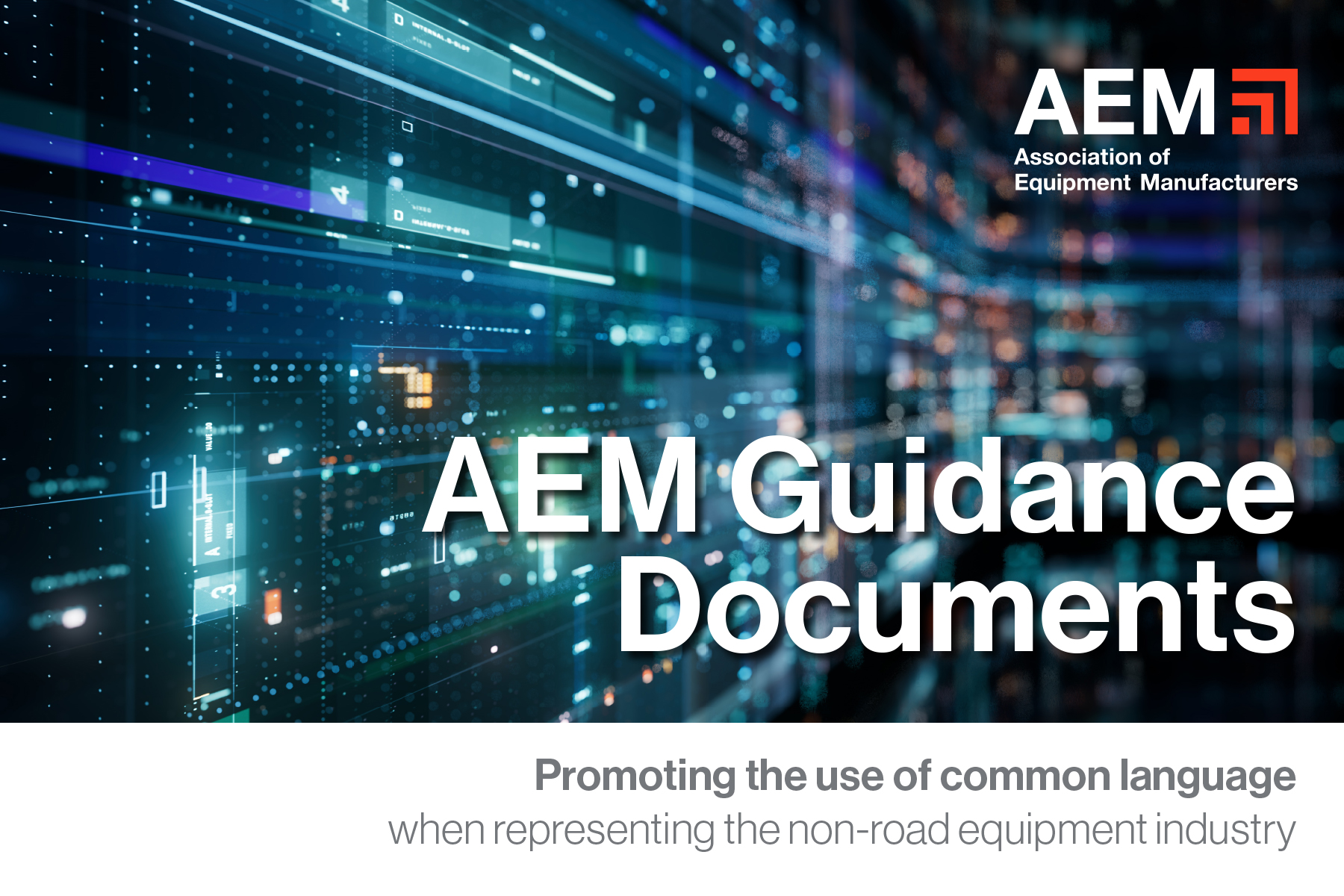 It’s why AEM and its member leaders developed three industry guidance documents to help non-road equipment manufacturers use agreed-upon common language when representing the industry and discussing the topics of autonomy, cybersecurity, and data.
It’s why AEM and its member leaders developed three industry guidance documents to help non-road equipment manufacturers use agreed-upon common language when representing the industry and discussing the topics of autonomy, cybersecurity, and data.
The documents provide structured vocabulary for industry representatives as they engage in conversations and share information:
- Inside and outside of the industry
- With lawmakers and regulators
- With customers and equipment end users
- With the general public
The direct result of collaboration between AEM member company representatives of AEM’s Ag Technology Leadership Group and CE Technology Leadership Group, these documents serve as resources for educating customers, end users, lawmakers, regulators, and the general public on:
- The implementation of autonomy in our industry
- The levels of cybersecurity for machine data today
- How equipment data is accessed
These documents are not intended to be all-inclusive or all-encompassing, but instead serve to offer a glimpse into the implementation of autonomy, cybersecurity, and data in the non-road industry.
Non-road equipment is designed to execute specific functions relative to its intended applications and tasks in non-road environments in agriculture and construction. Construction worksites, farm fields, dairies and feedlots, areas of animal husbandry, etc., are dynamic environments defined by fences or other boundaries with some level of restriction for access or entry. These do not apply to on-road operation of non-road equipment.
Levels of Autonomy for Non-Road Equipment
*For the purposes of this document, a machine can be a single machine or a combination of machines, products, and systems (components working in coordination, acting with self-awareness within a system). It should be noted that an operator can take control of a machine at all times, in any of the levels highlighted in this document.
Cybersecurity for Machine Data for Non-Road Equipment
*For the purposes of this document, it is important to note that this does not apply to connections made outside of an OEM- supported interface.
Data Layers for Non-Road Equipment
*For the purposes of this document, it is important to note that a fleet includes a system of connected IoT devices (machines) and external data inputs (weather monitoring, ground conditions, project progress trackers, etc.). Proprietary levels of machine data are out of scope for this document.